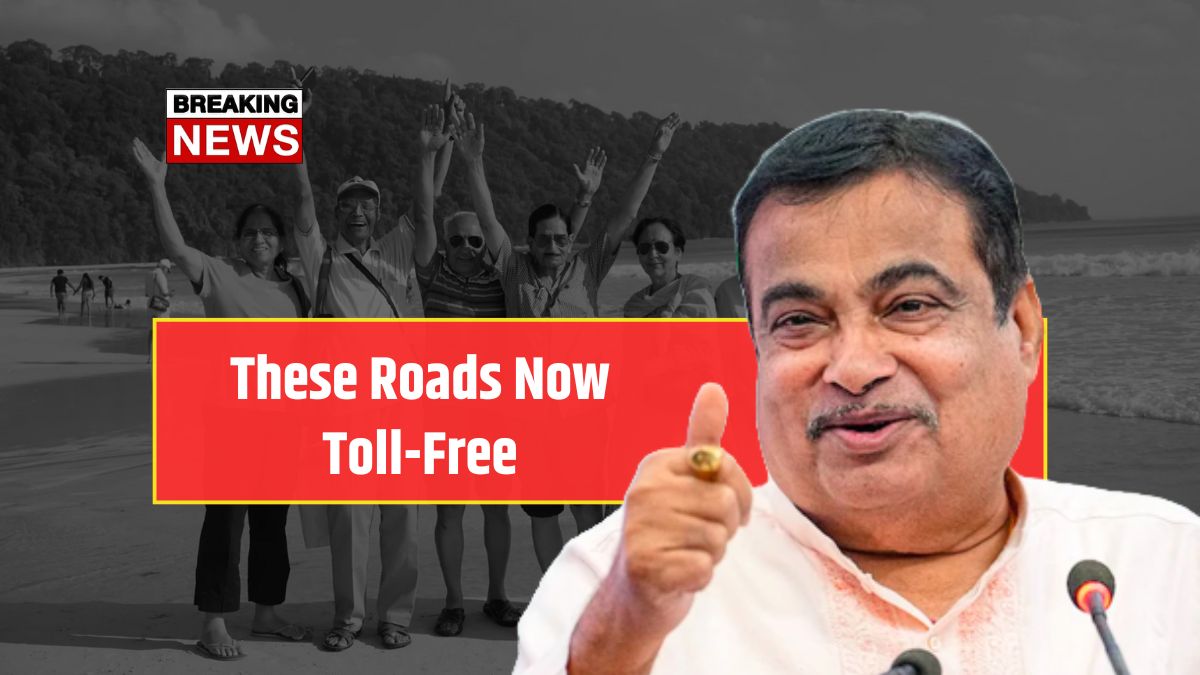Toll-Free Travel – In a major move to make traveling smoother and cheaper, the Indian government has announced toll-free access on several important roads across the country. This step will help reduce traffic jams, lower transportation costs, and support faster movement, especially in areas that are important for defense, agriculture, and emergencies. Some public interest routes have also been included in the list.
So, what is behind this decision, and how will it impact you? Let’s dive into the full details.
Why Has the Government Allowed Toll-Free Travel?
The main reason for this decision is to make travel easier and faster in crucial areas. Emergency services, farmers, and defense forces often need quick and hassle-free access to certain routes. Plus, in remote and rural regions, locals were facing heavy toll charges, which made daily travel costly. By making some roads toll-free, the government wants to ensure smoother emergency response, better support for farmers, and an overall boost to regional mobility. It will also ease congestion at many busy toll plazas.
Which Roads Are Now Toll-Free?
A number of national and state highways have now been declared toll-free, either fully or partially. Some of the key roads included in the new exemption list are:
- Roads close to India’s international borders, mainly for defense movements.
- Highways running through tribal, rural, or flood-affected regions.
- Roads connecting major pilgrimage centers or tourist destinations.
- Important stretches that help transport agricultural goods quickly.
Here are a few important examples from the latest list:
- The NH-310 from Gangtok to Nathula in Sikkim is now toll-free, mainly for defense purposes.
- The NH-125 stretch from Jaisalmer to Tanot in Rajasthan is also toll-free, supporting strategic movements.
- The road from Nashik to Trimbakeshwar in Maharashtra, an important pilgrimage route, has been made toll-free too.
- A section of NH-44 between Jammu and Udhampur is now toll-free for civilian emergency use.
- The NH-37 from Guwahati to Tezpur in Assam, a flood-prone region, has also been included.
- NH-233A from Faizabad to Prayagraj in Uttar Pradesh has been made toll-free, helping Kumbh Mela travelers.
- The Amritsar to Wagah Border road in Punjab is toll-free to promote border tourism.
- The Mysore to Wayanad stretch on NH-766E is toll-free because it passes through an eco-sensitive zone.
Who Gets Toll-Free Access?
Not everyone traveling on these roads will automatically skip paying tolls. The exemptions apply mainly to:
- Vehicles carrying defense personnel and paramilitary forces on official duty.
- State-run transport buses and ambulances.
- Farmers transporting fresh produce on notified routes.
- Pilgrims traveling during government-recognized religious events.
- Emergency response vehicles like fire engines and disaster management teams.
Private vehicles not falling under these categories will still need to pay tolls unless otherwise specified.
What Does This Mean for Daily Travelers and Transporters?
The move is expected to bring a lot of benefits for both commuters and businesses. Here is how:
- Travel costs will come down for transporters, especially those moving farm goods or essential items.
- Time spent at toll booths will reduce, leading to faster journeys.
- It will give a push to local economies by improving connectivity and encouraging more movement.
- Emergency services will reach disaster-hit or remote areas faster without delays at toll plazas.
Important Toll Rules That Still Apply
While many roads are now toll-free, some rules remain unchanged. Vehicles not listed under exemptions will still have to pay tolls. FASTag continues to be mandatory for all non-exempt vehicles. Skipping toll payments without proper exemption can still lead to penalties. Even on toll-free roads, road maintenance charges are funded separately and not waived.
How Can You Check If Your Route is Toll-Free?
Before you hit the road, it is a good idea to double-check your route’s toll status. You can do this by:
- Using the NHAI Toll Plaza Locator app for live updates.
- Visiting the official Ministry of Road Transport and Highways (MoRTH) website.
- Checking state highway authority websites for state-specific updates.
- Monitoring your FASTag app for zero deduction alerts on toll-free roads.
Will More Roads Become Toll-Free?
There is a strong possibility that more roads will be added to the toll-free list soon. The transport ministry is reviewing other important routes, especially those near religious centers, military bases, and disaster-prone regions. If the trend continues, travel could become even more affordable and efficient for a lot more people.
The new toll-free travel plan shows that the government is seriously working to make road travel simpler and cheaper where it matters most. But travelers are advised to stay updated through official sources, as toll policies are regularly revised based on changing needs.




